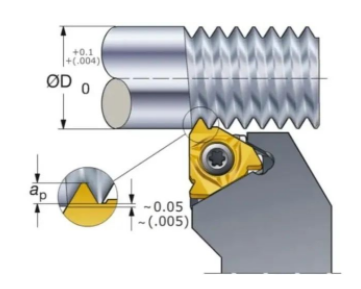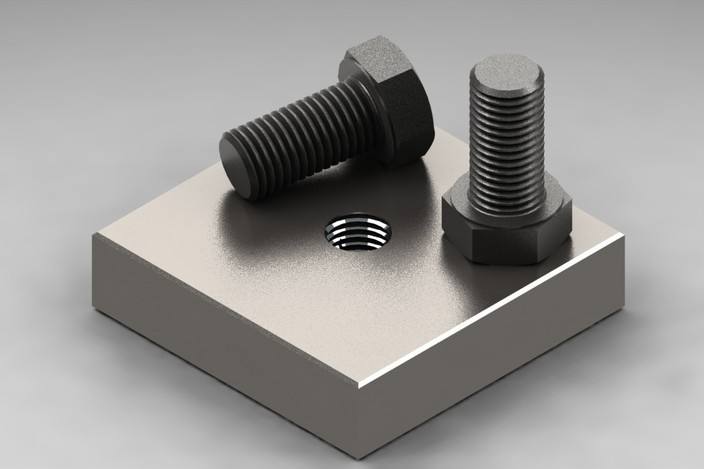Thread cutting
It generally refers to the method of processing threads on the workpiece with forming tools or abrasives, mainly turning, milling, tapping, threading, grinding, lapping and cyclone cutting. When turning, milling and grinding threads, the drive chain of the machine tool ensures that the turning tool, milling tool or grinding wheel moves accurately and evenly along the axial direction of the workpiece for each revolution of the workpiece. In tapping or threading, the tool (tap or plate) moves in relative rotation to the workpiece and is guided by the thread groove first formed to move the tool (or workpiece) axially.
Turning threads on a lathe can be done with either a forming tool or a thread comb (see Tools for Threading). Thread turning with a forming tool is a common method for single-piece and small batch production of threaded workpieces due to its simple tool structure; thread turning with a thread comb tool is highly productive, but the tool structure is complicated and only suitable for turning short threaded workpieces with fine teeth in medium and large batch production. The pitch accuracy of ordinary lathe turning trapezoidal threads can only reach 8~9 grade (JB 2886-81, same below); the productivity or accuracy can be significantly improved by processing threads on a specialized thread turning machine.
Thread Milling
Milling on a thread milling machine with a disc or comb milling cutter. Disc milling cutters are mainly used for milling trapezoidal external threads on workpieces such as screw and worm shafts. Comb milling cutters are used for milling internal and external common threads and tapered threads. Since the workpiece is milled with a multi-edged cutter and the length of the working part is larger than the length of the thread to be machined, the workpiece can be machined with only 1.25 to 1.5 revolutions, resulting in high productivity. The pitch accuracy of thread milling is generally 8~9 grade. This method is suitable for batch production of thread work of general accuracy or rough machining before grinding.
Thread grinding
It is mainly used for machining the precision threads of hardened workpieces on thread grinding machines.
Thread grinding is divided into single thread grinding wheel and multi thread grinding wheel according to the shape of grinding wheel cross section. Single thread grinding can achieve pitch accuracy of 5~6, surface roughness of Ra1.25~0.08 micron, and easy wheel dressing.
This method is suitable for grinding precision screws, thread gauges, worm gears, small-lot threaded workpieces and shovel grinding precision hobs. Multiline grinding is divided into two types: longitudinal grinding and plunge grinding. In the longitudinal grinding method, the width of the grinding wheel is smaller than the length of the thread to be ground, and the grinding wheel can be moved longitudinally in one or several strokes to grind the thread to its final size. In the plunge grinding method, the width of the grinding wheel is greater than the length of the thread to be ground, and the grinding wheel is cut radially into the surface of the workpiece, and the workpiece can be ground in about 1.25 revolutions, so the productivity is higher, but the accuracy is slightly lower and the dressing of the grinding wheel is more complicated. The plunge grinding method is suitable for shoveling large quantities of taps and grinding certain threads for fastening.
Post time: Sep-15-2022






